Bird call classifiers for Zürcher Oberland forests and at the Luppmen
Decision table for identifying calls
| Bird | Description | Audio |
| simple rhythmic | ||
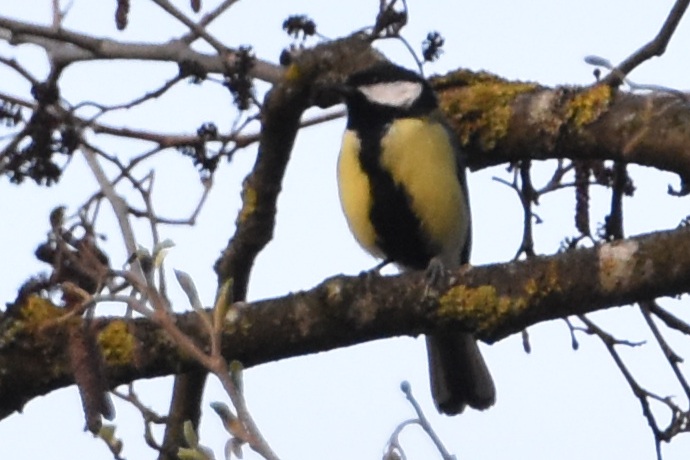 Great tit ■■
Great tit ■■ |
simple rhythmic fast low-high (1-7 KHz) .
Chuck-a-chuck-a-chuck, sometimes preceded by higher 'wheat!'
Call: |
♫
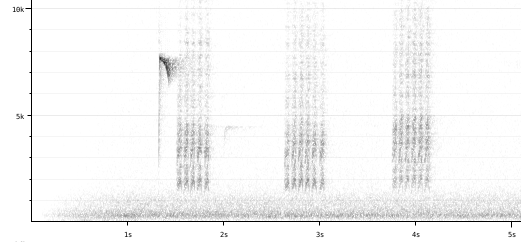
|
|
|
simple rhythmic slow high (3-9 KHz) .
Low-high-high, with lightly raspy start, rather high.
Call: | ♫ |
| one note | ||
| swoop | ||
|
|
swoop one note slow high (6-9 KHz) .
Falling note, relatively long, sometimes repeated - like the pee below without the choo?
Call: . [Link] |
♫
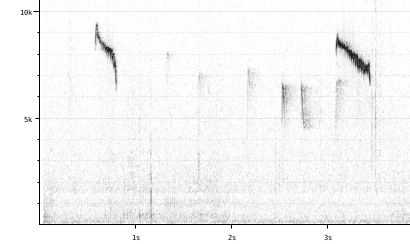
|
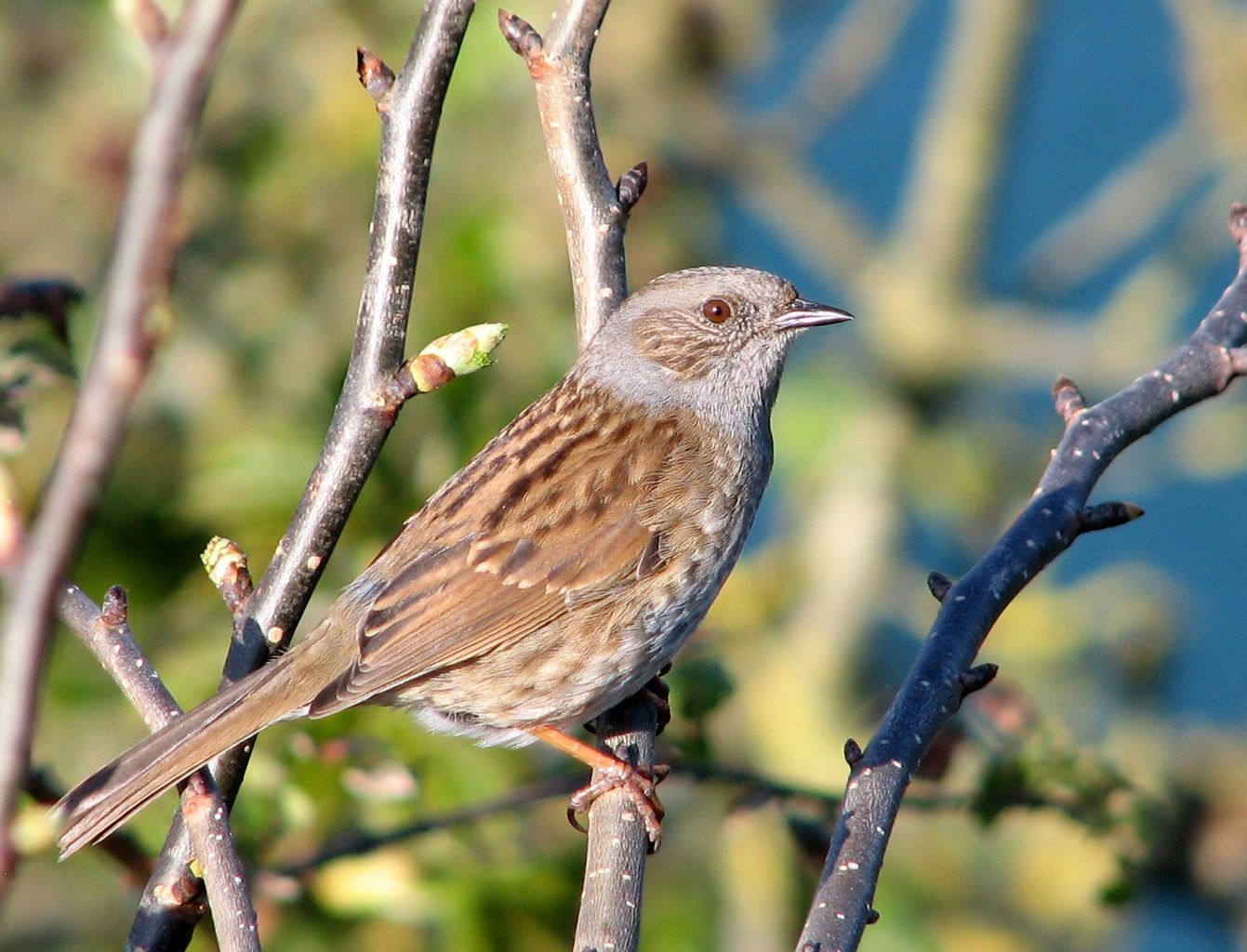 Dunnock ■■
Dunnock ■■ |
swoop one note fast high (5-7 KHz) .
Swooping staccato call 0.5 seconds long heard near Lendikon. Repeated irregularly after 1-3.5 seconds.
Call: |
♫
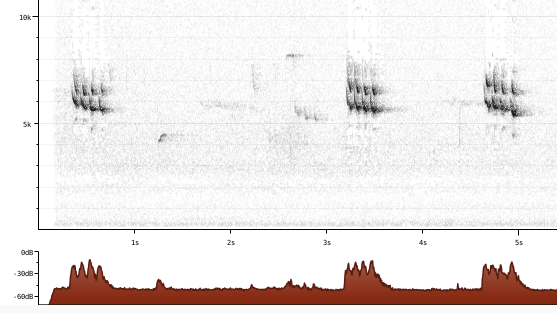
|
| sputter/pebble-clatter | ||
|
|
sputter/pebble-clatter one note slow high (4-9 KHz) .
Personal: A single note usually repeated twice. Somewhat sputtery. BirdID refers to 'a thin, electric "tick". In one source said to be used as alarm call. Call: | ♫ |
|
|
sputter/pebble-clatter one note slow high (3-8 KHz) .
Sputtery/drippy/trilly repeated notes at 3-8 KHz. June 2022 heard check calls that were distinctly irregularly in their rhythm.
Call: | ♫ |
| whoop, sputter/pebble-clatter | ||
|
|
whoop, sputter/pebble-clatter one note slow medium (4-5 KHz) .
XC560014 matches exactly what BirdID describes: 'Alarm call is a chat-like alternation between short, high-pitched "wit" sounds, and series of hard and dry "teck".' The high-pitched call I heard recently was between 5 and 6 KHz, which could help to distinguish between other birds with a deeper voice. The whooping call is sometimes listed as an alarm call.
Call: |
♫

|
|
|
one note slow high (7-10 KHz) .
- contact callOne or two high chirps followed by long pause of 1-2 seconds
Call: | ♫ |
| non-musical | ||
| rattle | ||
|
|
rattle non-musical fast low-high (2-9 KHz) .
General: I mistook this one for a woodpecker the first time I heard it,
partly because BirdNet also did!
Rattle generated in vocal tract, not with the beak!
Call: | |
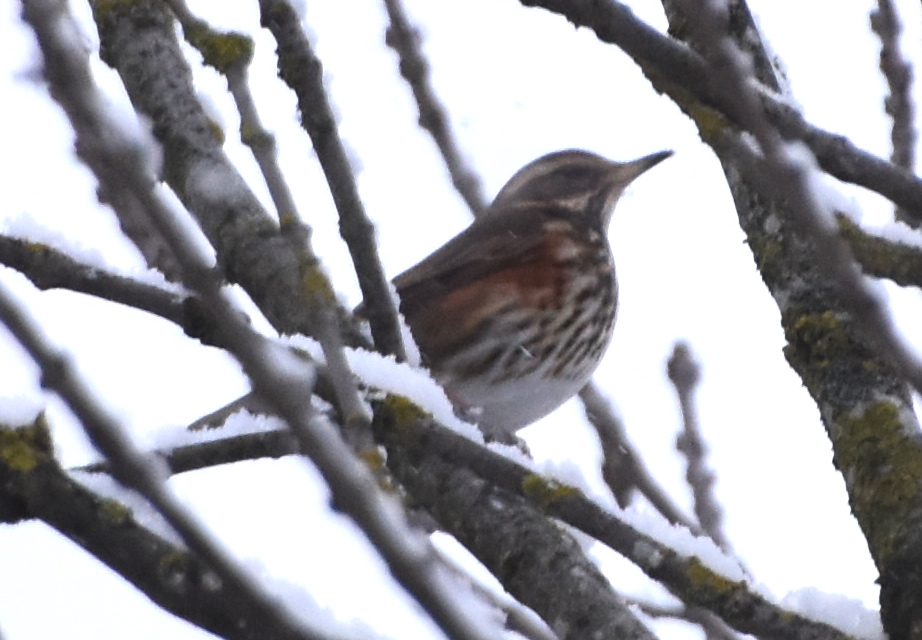 Redwing ■■
Redwing ■■ |
.
Automatically generated from Xeno-Canto recording
Call: |
♫

|
| one note | ||
| whoop | ||
|
|
whoop one note slow medium (2-4 KHz) .
Repeated rising note, not too loud
Call: |
♫

|
| simple rhythmic | ||
| whoop | ||
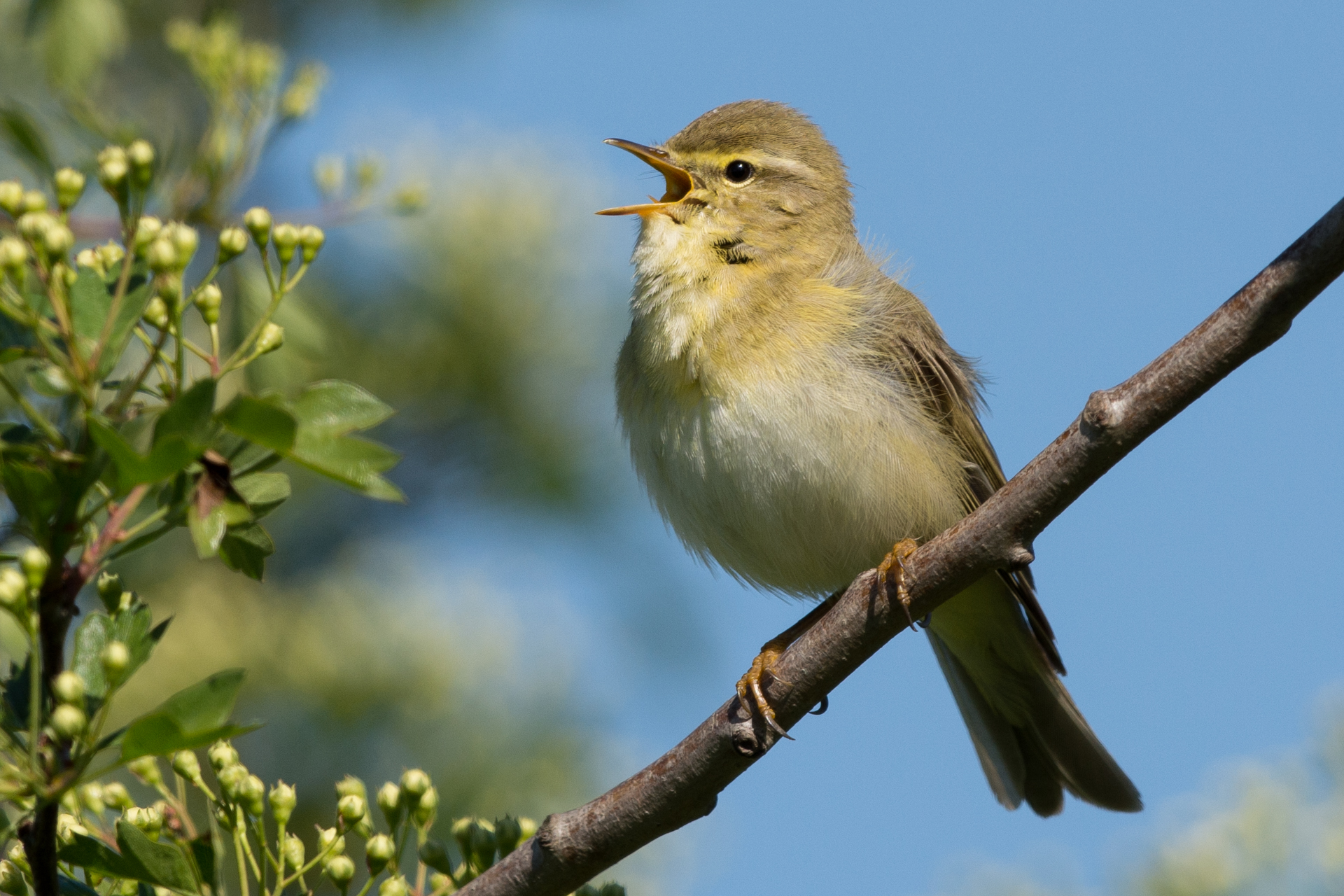 Willow warbler ■■
Willow warbler ■■ |
whoop simple rhythmic slow medium (2-4 KHz) .
- contact callWhoop very similar to chiffchaff, etc. but starts at an even level, then ascends.
Call: |
♫

|
| one note | ||
| sputter/pebble-clatter | ||
|
|
sputter/pebble-clatter one note slow high (3-9 KHz) .
General: Sputtery/stoney, but may have other calls too. Call: |
♫
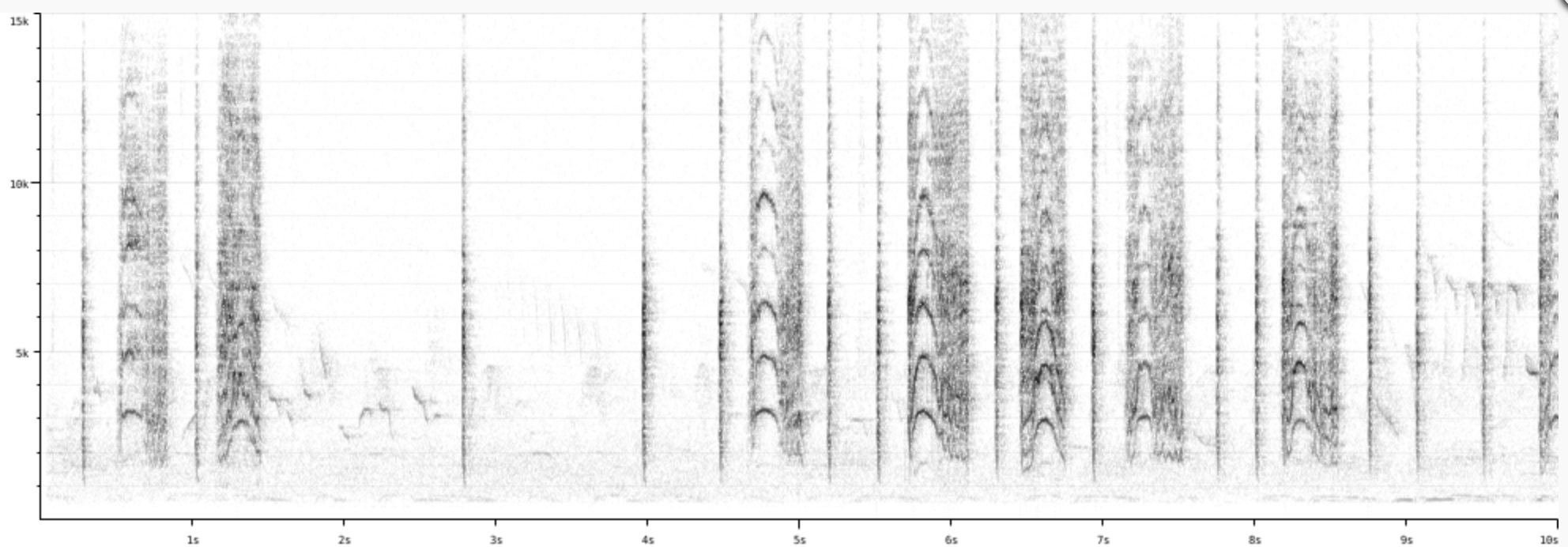
|
|
|
.
Automatically generated from Xeno-Canto recording
Call: | ♫ |
| stereotype melodic | ||
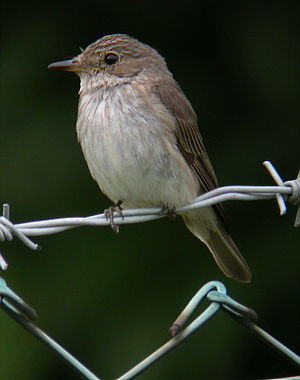 Spotted flycatcher ■■
Spotted flycatcher ■■ |
stereotype melodic slow high (4-7 KHz) .
General: To me something between a one-note and an extremely simple melody, namely med-med chk-hi-med-med, with a very irregular speed, not at all like a metronome. Call: |
♫
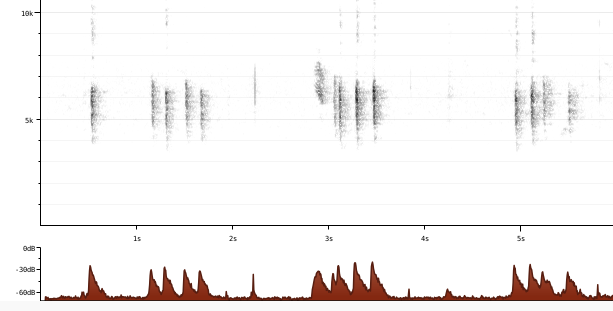
|
| one note | ||
|
|
one note fast low (2-3 KHz) .
A long fast sequence of notes - is it the 'twit' call mentioned above?
Call: Other: It gives loud calls when excited, an abrupt ‘twit”, only one, or in slow series, but often in phrases of 3-4 notes in rapid succession. But in great excitement, it utters phrases of about ten notes per second!
We can also hear some shrill “sirrrr”, becoming harsher in alarm call. The contact call is a thin “tsit” uttered before to take off.
[Link] Other: Very varied voice. Ranging from very high pitched whistles and melodic resonant calls, to chattering and nasal mocking sounds. Characteristic warning call a hard "check" or "chwit", often in rapid series, like a pebble bouncing on hollow ice. [Link] |
♫
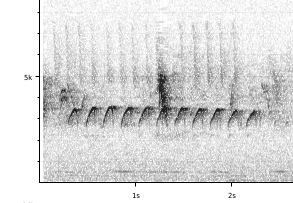
|
|
|
one note slow high (5-7 KHz) .
General: See the sonogram how the song may descend rapidly from 7Khz to and then climb from 5 to 5.75 KHz, a kind of reversed checkmark. However I find it hard to distinguish from a single note. I'm not a bird ;-( Call: |
♫
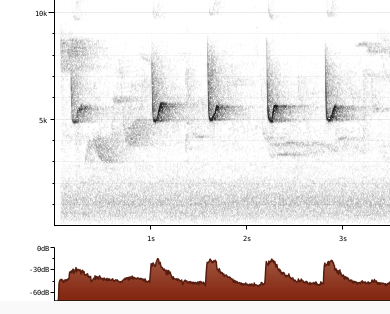
|
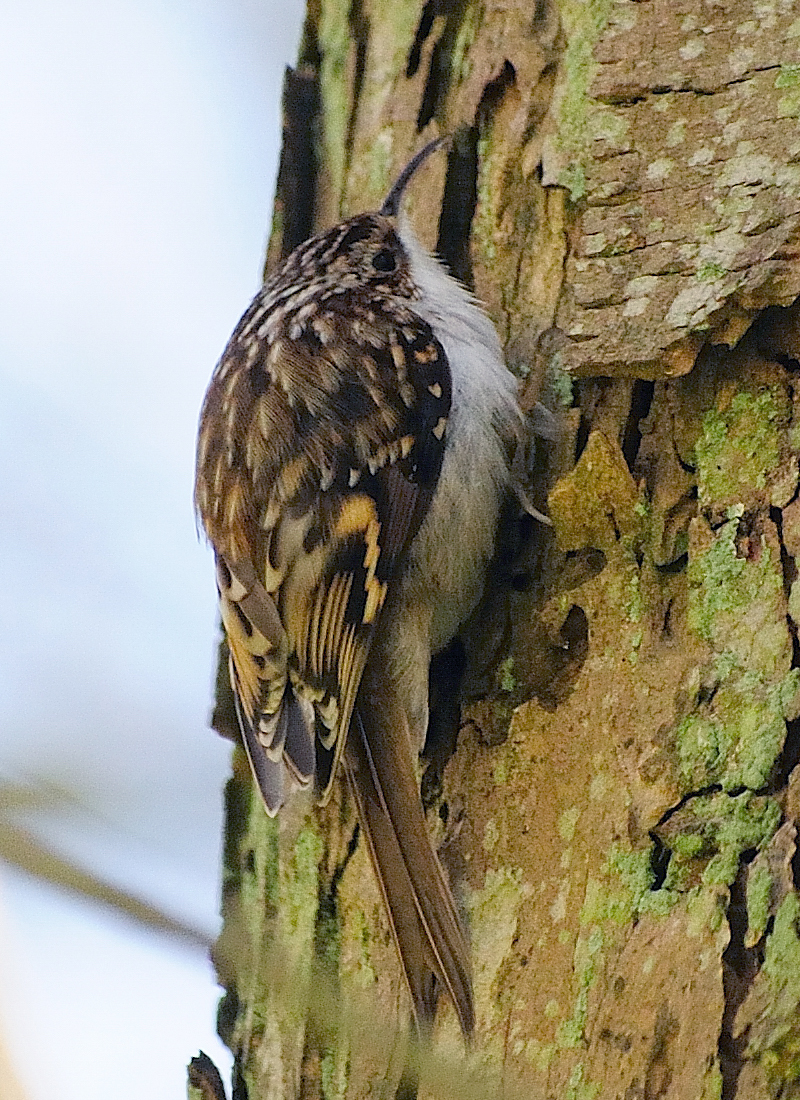 Eurasian treecreeper ■■
Eurasian treecreeper ■■ |
one note slow high (7-9 KHz) .
General: Wikipedia says: The contact call is a very quiet, thin and high-pitched sit, but the most distinctive call is a penetrating tsree, with a vibrato quality, sometimes repeated as a series of notes. Fairly regularly spaced single tseep at 7-9KHz. Call: |
♫
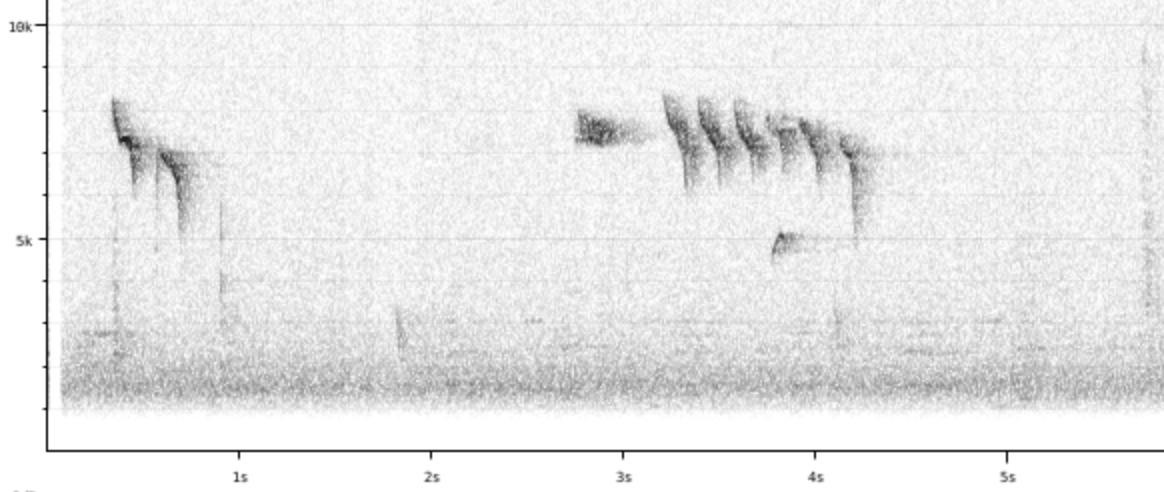
|
| rasp | ||
|
|
rasp one note slow medium (1-5 KHz) .
Typically harsh jay call. I would say a contact call usually means 'Here I am', answered by 'Good, here I am.' Listening to two jays in the Swiss mountains of Toggenburg, it sounded like 'HEY IDIOT, HERE I AM...WHERE THE HECK ARE YOU?' 'WHAT? YOU HAVEN'T FIGURE IT OUT? OF COURSE I'M OVER HERE. PEABRAIN.' On the other hand, anthropomorphism is always dangerous, usually completely wrong approach.
Call: | ♫ |
| whoop | ||
|
|
whoop one note slow medium (1-6 KHz) .
I hear this occasionally and really enjoy it - a long rising 'whoop', as I call it', starting low at 1 1/2 KHz and rising to 6 1/2 KHz!
Call: | ♫ |
Practice
♫ Answer Goldcrest ♫ Answer
Great tit Call from Xeno-Canto Illustrates higher 'wheat' before the 'chuck-a-chuck'
♫
Answer
Great tit Call from Xeno-Canto Illustrates higher 'wheat' before the 'chuck-a-chuck'
♫
 Answer
Eurasian treecreeper XC206282 Eurasian treecreeper call.
♫
Answer
Common starling
♫
Answer
Eurasian wren XC195946 Eurasian wren call.
♫
Answer
Eurasian treecreeper XC206282 Eurasian treecreeper call.
♫
Answer
Common starling
♫
Answer
Eurasian wren XC195946 Eurasian wren call.
♫
 Answer
Common chiffchaff
♫
Answer
Common chiffchaff
♫
 Answer
Marsh tit Call from Xeno-Canto
♫
Answer
Marsh tit Call from Xeno-Canto
♫
 Answer
Black redstart
♫
Answer
Black redstart
♫
 Answer
Dunnock
♫
Answer
Dunnock
♫
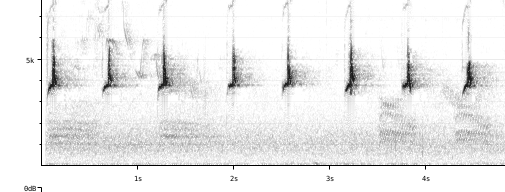 Answer
Common chaffinch Rain call from XenoCanto Recorded by Paul Driver in Mundford, Norfolk, UK
♫
Answer
European robin I heard 3 or 4 scattered birds calling it in woods with underbrush but saw no birds. BirdNet told me they were robins, which I found hard to believe, but on comparing it with recordings at XenoCanto, I was convinced! Maybe they were telling each other "Don't show yourself to that alarming guy!".
♫
Answer
Eurasian blue tit
♫
Answer
Song thrush XC570136 song thrush alarm call.
♫
Answer
Common chaffinch Rain call from XenoCanto Recorded by Paul Driver in Mundford, Norfolk, UK
♫
Answer
European robin I heard 3 or 4 scattered birds calling it in woods with underbrush but saw no birds. BirdNet told me they were robins, which I found hard to believe, but on comparing it with recordings at XenoCanto, I was convinced! Maybe they were telling each other "Don't show yourself to that alarming guy!".
♫
Answer
Eurasian blue tit
♫
Answer
Song thrush XC570136 song thrush alarm call.
♫
 Answer
Short-toed treecreeper A recording from Jorge Leitão in the Netherlands that I assume is the tyt tyt call.
♫
Answer
Short-toed treecreeper A recording from Jorge Leitão in the Netherlands that I assume is the tyt tyt call.
♫
 Answer
Redwing XC320315 - Redwing - Turdus iliacus.
♫
Answer
Redwing XC320315 - Redwing - Turdus iliacus.
♫
 Answer
Spotted flycatcher XC656714 - Spotted Flycatcher - Muscicapa striata - Sounds similar to what I know.
♫
Answer
Eurasian jay XC536051 Eurasian Jay harsh call 20s.
♫
Answer
Spotted flycatcher XC656714 - Spotted Flycatcher - Muscicapa striata - Sounds similar to what I know.
♫
Answer
Eurasian jay XC536051 Eurasian Jay harsh call 20s.
♫
 Answer
Long-tailed tit Flight call from XenoCanto
♫
Answer
Long-tailed tit Flight call from XenoCanto
♫
 Answer
Willow warbler Call recorded in UK, sounds typical to me, and spiced up by a yellowhammer in the background and several other birds
♫
Answer
Willow warbler Call recorded in UK, sounds typical to me, and spiced up by a yellowhammer in the background and several other birds
♫
 Answer
European nuthatch Long fast sequence of identical whoops, possibly 'twit' call.
♫
Answer
European nuthatch Long fast sequence of identical whoops, possibly 'twit' call.
♫
 Answer
Black cap warbler XC546030 black cap warbler so-called tac and djii call.
Answer
Black cap warbler XC546030 black cap warbler so-called tac and djii call.
Birds with insufficient information about songs/calls
| Bird | Description | Audio |
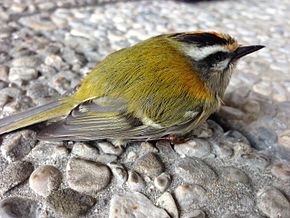 Common firecrest ■■
Common firecrest ■■ |
Call: | |
| simple rhythmic | ||
|
|
simple rhythmic slow high (3-9 KHz) .
- flight call |
♫

|
| one note | ||
| whoop | ||
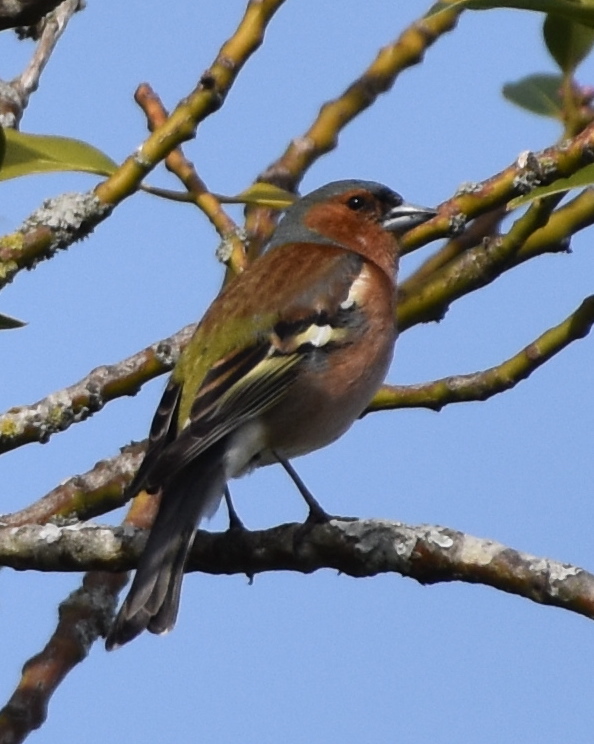 Common chaffinch ■■
Common chaffinch ■■ |
whoop one note slow medium (3-5 KHz) .
- rain callGeneral: Repeated ascending note, faster than the long starling whoops, but compare with the black redstart.
There are many different calls, the Marler book describes the 'chink' call as functioning as a mobbing and separation call.
At XenoCanto I find calls described as "ping", "pik" (same thing?), "pchew", "duit", "huit", "ti-huit". Call: |
♫

|